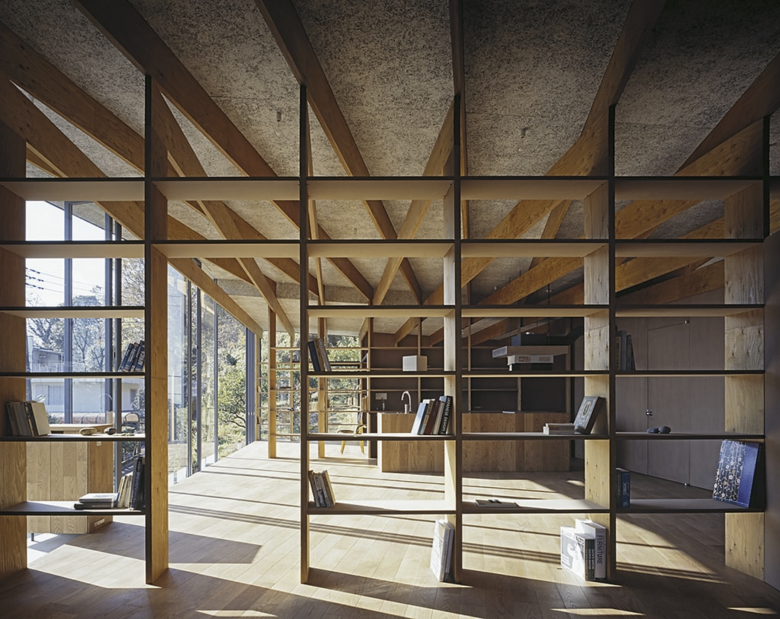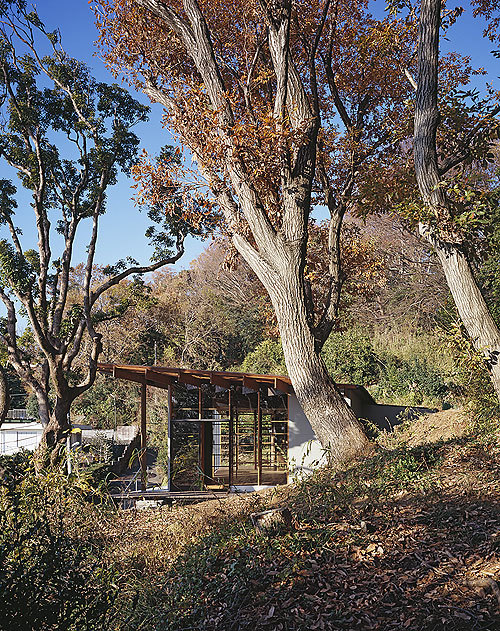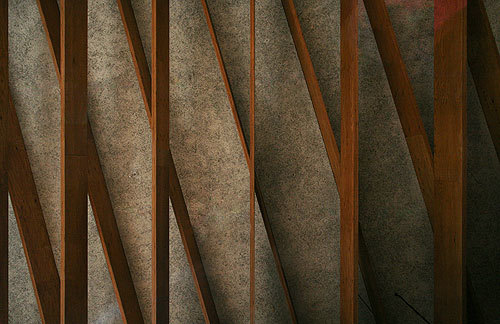Structure of the land
On a brow of mountain range of Hakone, along the Odawara plain is a site.
It’s sunny rolling hillside where once were fruit trees. On the south you can have clear view of distant Sagami Bay. On the north is a mountain that gives shelter from north wind. Deciduous broad-leaved trees cast soothing shadows in summer, and in winter, they shed their leaves and allow weak sunlight to penetrate and to warm the moist mountain soil. And the perfect environment for living was there, waiting quietly to be found.
It didn’t seem right to bring some irrelevant element to “the land” and complete “a house”. My mission as an architect is to draw out the latent “habitability” of “the land”, adjust and amplify it just enough for a man to “live in”. In short, we aimed to construct an architecture totally ordered by “the land”.
The resolution is to reduce the designing step and leave only fundamental constructive factors, setting frames and building a roof. Then we “listen to the land” in making all the decision.
Two set of portal frames (about 12m in length) are combined with delicate angle to fit gentle curve of the place to form a rack assembly with truss structure at midspan. The material used as frame is thin laminated veneer lumber (38 x 287mm). Such choice in material is achieved by efficiently distributing horizontal force on weak axes to back core through ridged-jointed truss on the ceiling. (The cross points in the middle part prevent 6-meter-long beams’ deflection.) These fin-like columns with shelf plates also play a role of semi-transmissive partition that separates the space loosely.
Each beams slant northward to support the roof that has enough pitch to cope with the rainy weather, and differentiate the ceiling height. Together with the ground tilt, this gives the spatial “variation” that complex life requires.
As you see, the features of this site (geomorphic characteristics, amount of rain) bring about special “geometry” to this architecture. It determines the structure and resulting dwelling space and brings harmony among them.
If you, as the origin of the word indicates, decide the order of an architecture (=geometry) by taking a close survey (=metria) of the land (=geo), the consequent architecture will have clear order while keeping continuity to the land.
“Observe the site well and find out hidden geometry.”
That accounts for almost all of our design work and, is essence of it.




